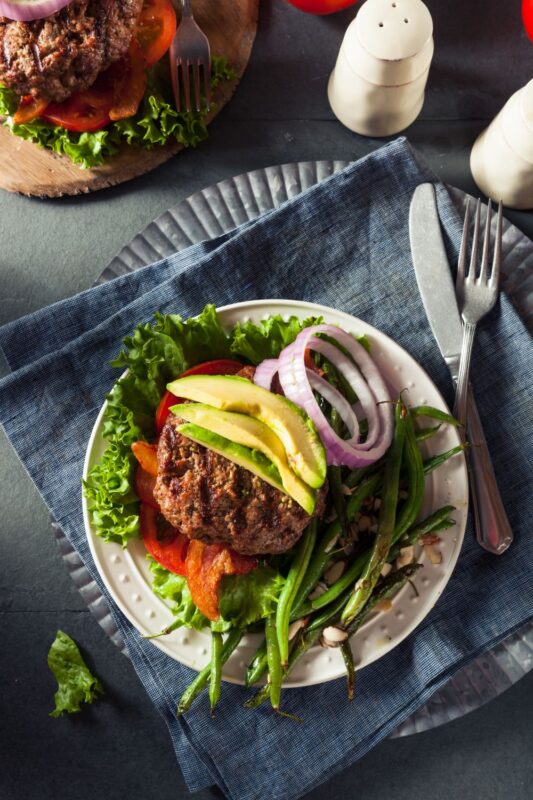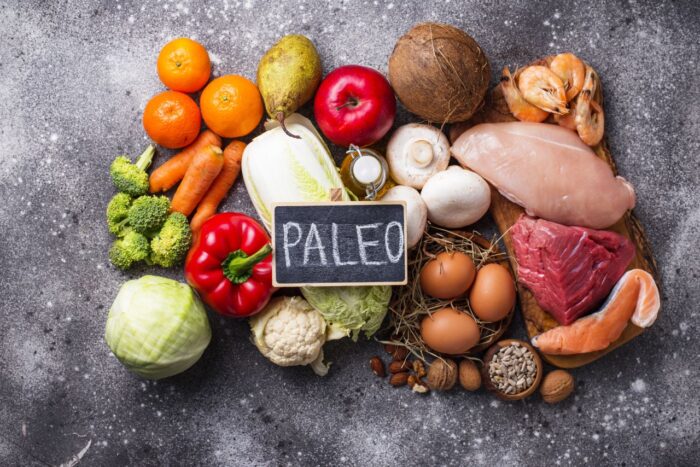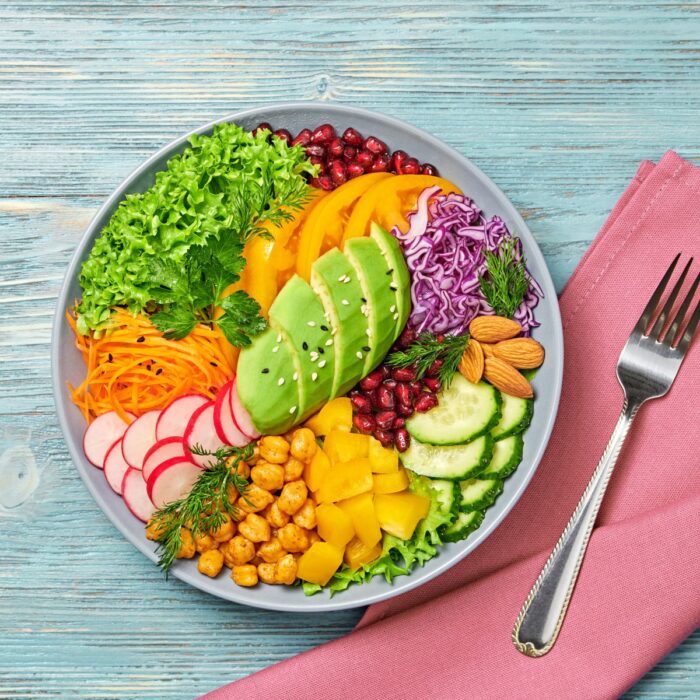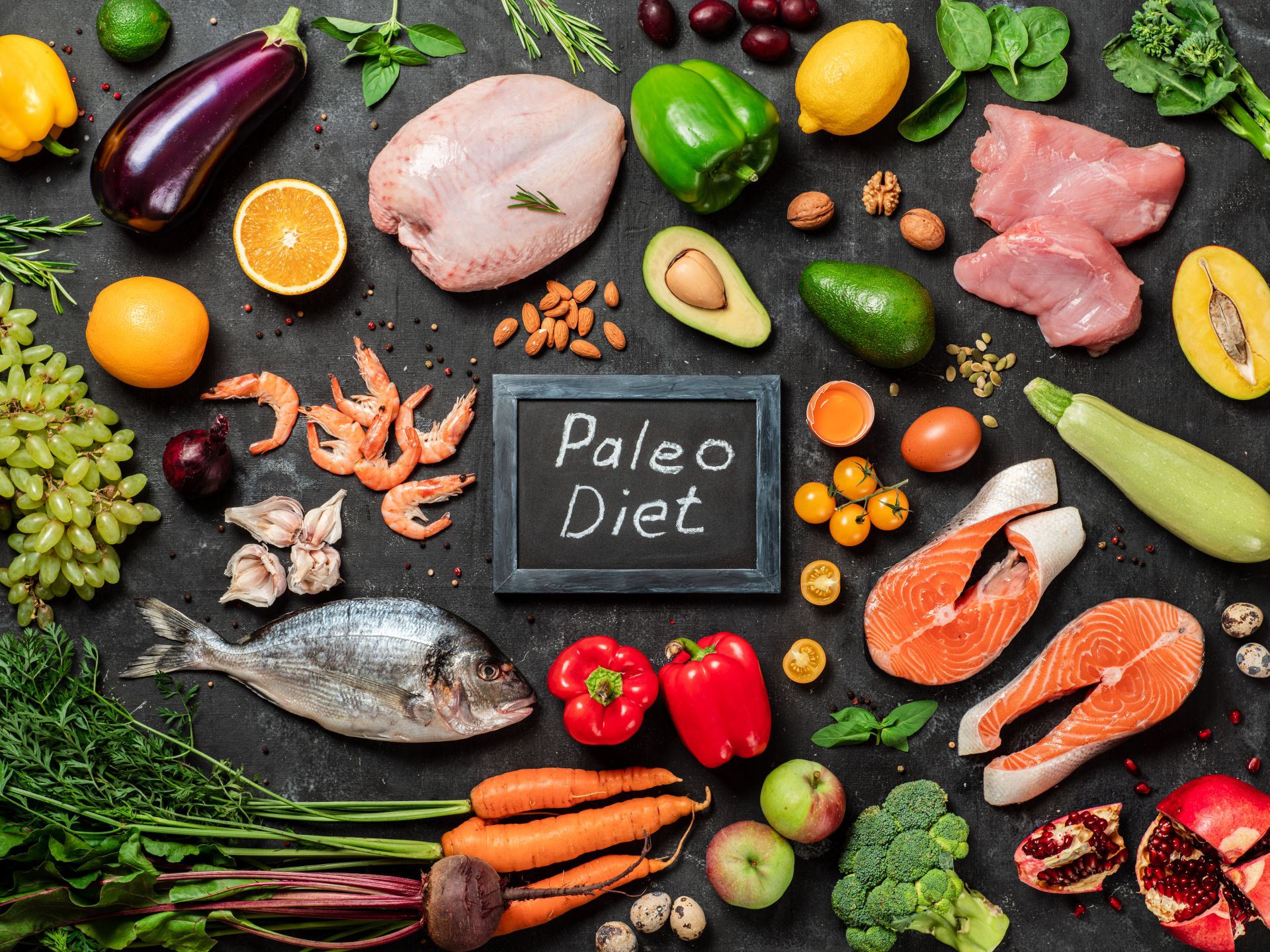The Paleo diet is not one of the most popular diets / ways of eating out there, but is still an important one.
I decided to check out all the diets that are recommended as healthy and see if they would indeed be useful for those diagnosed with MASLD / fatty liver disease.
Today, we’re going to look at the Paleo diet and decide if it’s a good fit for you – and also if it would be good to get your liver healthy. I will share all my thoughts on this matter, so that you can make an educated decision.

Before getting into this, it’s worth saying that I have used a slightly modified version of the Mediterranean diet in order to reverse my fatty liver in around 18 months.
I have never followed the Paleo diet, but I’ve been reading about it and getting research done for years now, so I believe I have a solid enough understanding of this diet to talk about it and recommend it (or not).
I also wrote an article about the controversial keto diet and fatty liver disease – make sure to read my thoughts on it after you’re done with this article.
And with all these being said, let’s jump right into the Paleo Diet & it’s potential benefits to those suffering from a fatty liver.
What is the Paleo Diet and how does it work with a fatty liver?

You can find out all the details about this diet online, on it’s official website, so I will only cover the basics in this article.
Chances are that if you’re looking for information about it, you already know the basics anyway, so I will focus more on the Pros and Cons than the principles.
But it’s good to know these too, so let’s check them out!
The basics of the Paleo diet are simple: somebody following this diet is supposed to only eat the foods that humans ate during the Paleolithic era (hence its name – Paleo), which extends from a few million years ago, up to the year 11,000 BC.
Of course, in reality, doing that is virtually impossible due to how the modern world looks now compared to 11 million years ago, but you can still easily follow some basic principles.
This means that you are generally supposed to stop eating refined and processed foods, including sugar, but also grains, cereals, dairy and legumes – these being the main things on the huge list of foods you can’t have when following this diet.
The good thing is that most of the foods that you have to stop eating are, for somebody suffering from a fatty liver, a good riddance. You should stop having most of them anyway!
On the list of foods to eat, you have fruits and vegetables, fish and seafood, any type of food that you could hunt back in the days (but also including grass-fed lean meat since you can’t really go hunting nowadays), eggs, nuts and seeds and also refined oils.
This gives you a lot of options when it comes to preparing meals. This also means that you could end up creating some very high in fat (and also high in carbs) dishes, so you should still pay attention to what you eat, especially if you have liver-related health issues.
Is the Paleo Diet a good choice to reverse fatty liver?

I personally believe that this is a diet that can really work well and help you reverse MASLD fast – it’s much better and healthier than others!
However, all these millions of years that have passed have also brought in some good things that we can benefit from and it would be a loss not to eat these highly nutritious foods just to stick to the Paleo Diet if your only reason to follow it is reversing fatty liver.
Of the foods that you are not supposed to eat when following a Paleo diet, but are otherwise good options for a fatty liver, I would mention all types of beans, as well as oatmeal, peanut butter (without sugar) and some dairy products. Some say that salt is off the menu too.
You also can’t have potatoes, pasta, bread or most drinks that are not plain water.
It’s not really a huge loss, but you are reducing your options unnecessarily and the higher the diversity of food you can put on your table, the better and easier it is for you to actually stick to the new way of eating.
However, the Paleo diet is indeed about eating healthy, in my opinion. You are expected to eat lean meat (from grass-fed sources, ideally organic), game, fish, eggs, nuts and seeds, healthy oils and all sorts of fruits and vegetables.
This makes this diet one of the more expensive ones to follow, since processed and more modern foods are much cheaper.
But if you spend some time to think about it, you’ll see that hospital bills are even more expensive in the end!
Here is an infographic showing what you are allowed to eat and what you are not allowed to eat when following the Paleo diet. It also includes an example meal plan about which we’ll talk more below (you can click the image to enlarge it):

As you can see, the meal plan itself seems mostly safe for somebody suffering from a fatty liver.
Of course, we would have to cut off the wine and instead of the scrambled eggs, we could eat poached eggs to keep fats to a minimum, but otherwise it looks really good as long as we keep portions under control.
The main benefits of the Paleo diet – from the point of view of somebody diagnosed with a fatty liver – are that it cuts off sugars and processed or refined foods, which is exactly what we need to do.
In theory, there was no alcohol back then, which is even better since we’re not allowed to drink alcohol with a fatty liver!
So if you really want to follow a diet that is easy to research and find recipes for, the Paleo diet is definitely a good choice and much better than others out there.
You should still exercise caution and make sure that you adjust everything to your fatty liver’s requirements.
In other words, don’t go for all those yummy desserts (which, even though made without sugar are still very high in carbs and fat) and fried foods that you might stumble upon. You should still keep carbs and fats to a minimum.
Wrapping up
Overall, I consider Paleo to be one of the healthiest diets – or ways of living, actually – out there.
You would have to make some sacrifices – like saying goodbye to coffee and legumes and potatoes and oatmeal and dairy… but all in all I would say that Paleo is a good diet to follow if you want to get healthier and reverse your fatty liver, having in mind everything that I wrote above.
But as I said, there are other ways to reverse your condition. The Mediterranean diet that I linked to at the beginning of the article is still a very good option. Not as restrictive, if you want and need some variety.
In other words, you shouldn’t switch to living the Paleo lifestyle if you only want to reverse your fatty liver. There are easier to follow diets out there (I repeat, the Mediterranean one) that will see you do it.
But if you believe in all the principles behind this diet, you can definitely make it work and see it help you reverse your condition.

I was diagnosed with a fatty liver back in 2014 and managed to reverse it by mid-2015. Since then, I’ve been studying it, continuously updating my knowledge with the latest scientific findings and practical approaches to give others the help they need to reverse their condition.
My approach to managing fatty liver is holistic, balancing scientifically-backed information with real-life, practical advice based on personal, direct experience.
I am also the admin of the Fatty Liver Support Group on Facebook and the Fatty Liver Subreddit.


Hi. Thanks for the effort of writing this blog. I have been diagnosed with mild fatty liver (non-alcoholic) 4.5 months ago and I have changed my diet significantly to Fruits, Vegetables, and Fish with some brown rice and even changed my lifestyle – jogging and walking every day. However, my weight has dropped from 73.5kg to 62kg in 4.5 months an. my friends said I have slimmed down. I’m afraid that the weight loss might go further, so I wish to know whether I still can consume carbohydrates (such as rice and potato) and meat. Or are there any ways to gain weight healthily amid my fatty liver disease.
Hi i have a fatty liver if i follow paleo diet how it will affects specially like eggs ,seeds & ext please reply
Adjustments will have to be made to make sure that you eat healthy. Eggs and Seeds can still be had with fatty liver – just pay attention to your daily caloric consumption. Unfortunately, I don’t know what “ext” is but Paleo is generally safe and needs minimal adjustments to make it work.